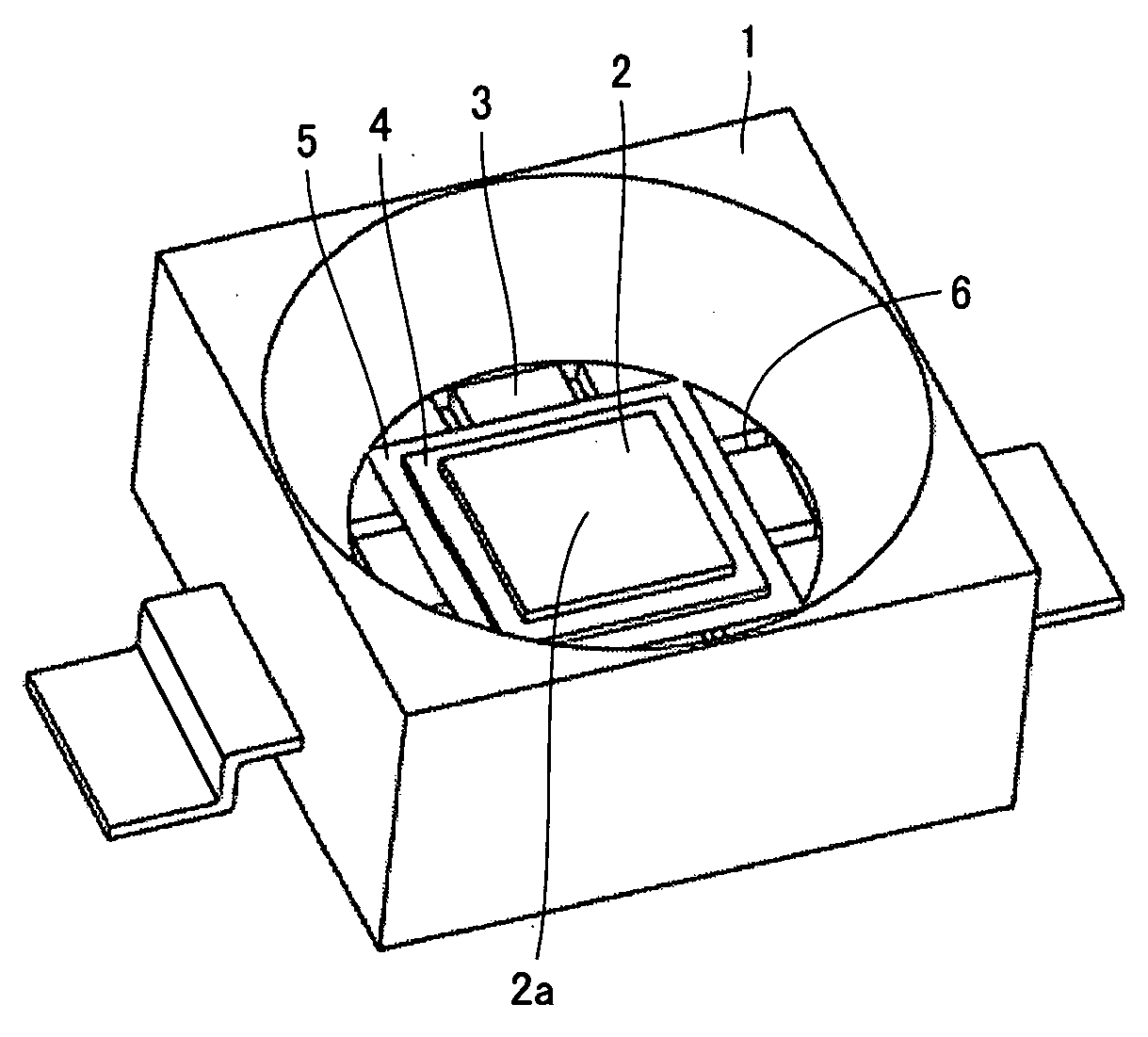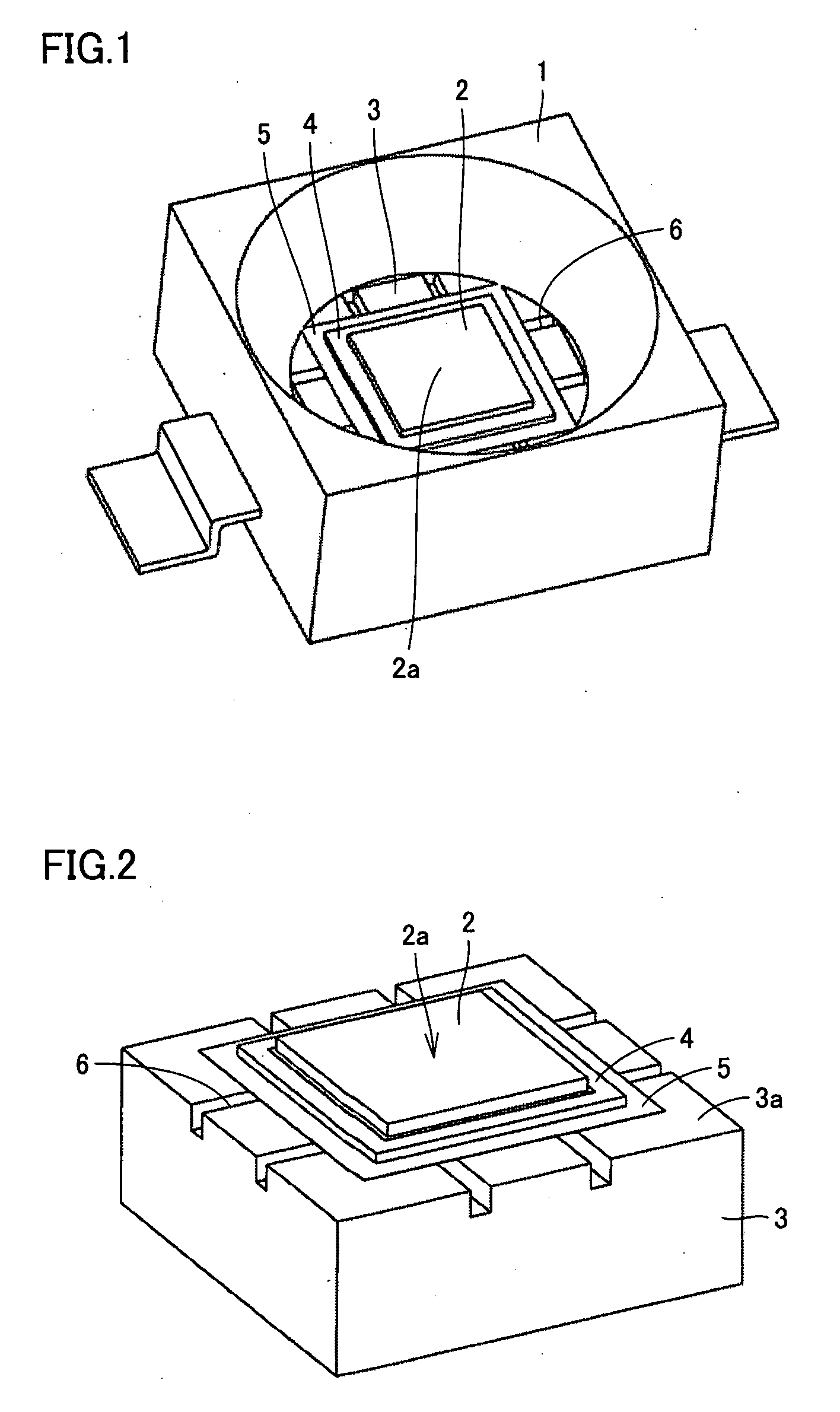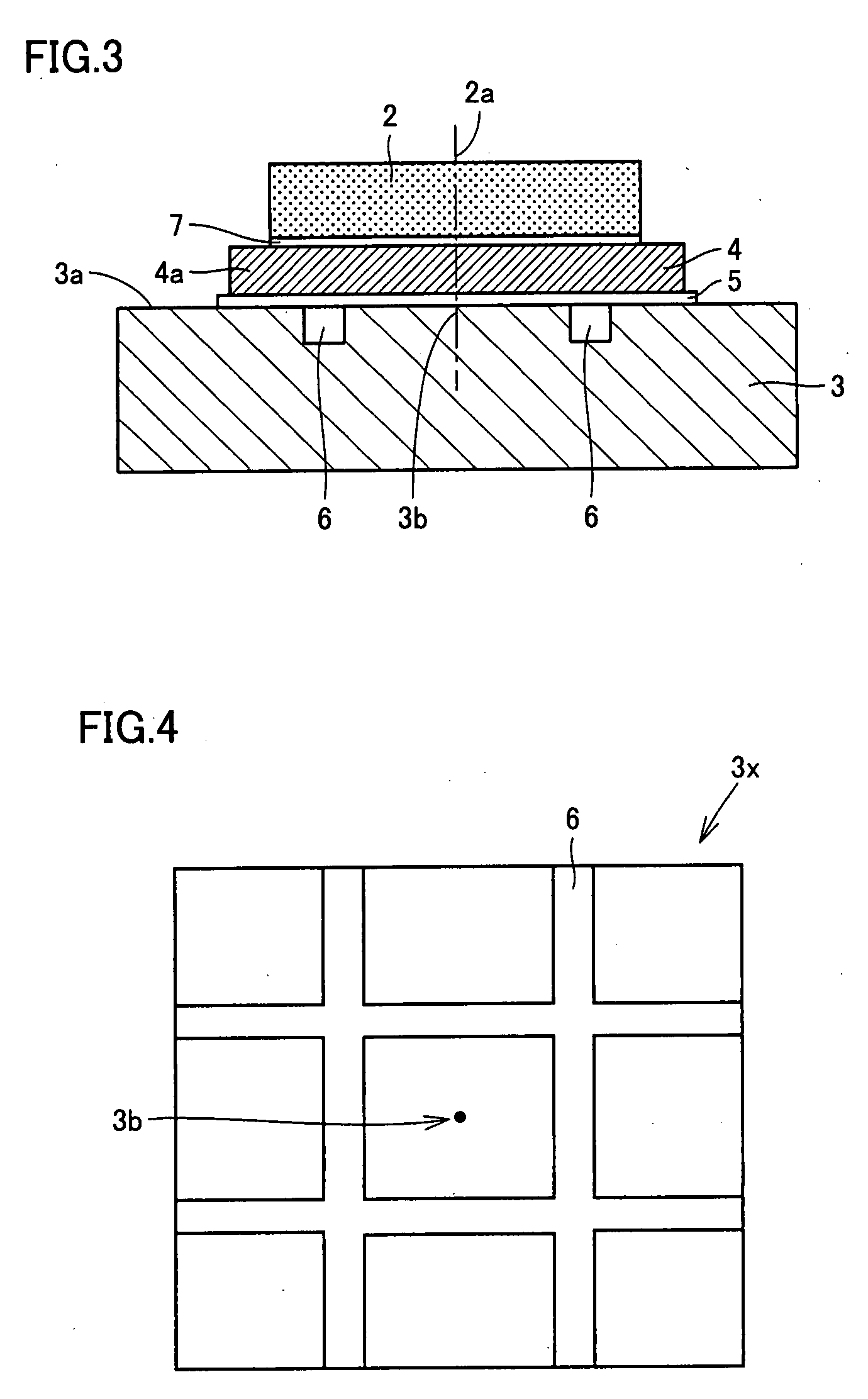Semiconductor light emitting device
a technology of semiconductors and light emitting devices, which is applied in semiconductor devices, solid-state devices, lasers, etc., can solve the problems of affecting the heat radiation performance of the light emitting element itself and the metal, generating stress due to the difference in the coefficient of thermal expansion between the light emitting element and the metal as the heat radiating member becomes not negligible, and unable to reduce stress. , to achieve the effect of excellent heat radiation performance and high reliability
- Summary
- Abstract
- Description
- Claims
- Application Information
AI Technical Summary
Benefits of technology
Problems solved by technology
Method used
Image
Examples
first embodiment
[0025]FIG. 1 is a perspective view showing a semiconductor light emitting device according to a first embodiment of the present invention. FIGS. 2 and 3 are perspective and cross-sectional views, respectively, showing a die-bonded shape of a heat radiating member, a submount, a light emitting element, and a brazing material portion included in the semiconductor light emitting device according to the embodiment of the present invention.
[0026]In the semiconductor light emitting device according to the present embodiment, a light emitting element 2 is fixed to a heat radiating member 3, within a resin package portion 1, by a brazing material 5 with a submount 4 interposed therebetween. On a surface 3a of heat radiating member 3 to which submount 4 is fixed, a groove 6 is formed. That is, on surface 3a of heat radiating member 3 on the die-bond side, groove 6 is formed. Submount 4 is die-bonded on surface 3a, using brazing material 5 such as solder or silver paste. On submount 4, light ...
second embodiment
[0030]Next, a second embodiment of the present invention will be described. Groove 6 can be arranged with considerably great degree of freedom, so long as it is not formed immediately below the heat radiating portion or immediately below the center of the light emitting element. Accordingly, in the second embodiment of the present invention, as shown in FIG. 4, at the surface of heat radiating member 3x, groove 6 is formed as lines perpendicularly crossing each other at right angles, so as to surround a rectangular plane region that includes portion 3b immediately below the center of light emitting element 2.
[0031]In the plan region occupied by light emitting element 2, it is desirable that the region surrounded by groove 6 is divided to be about 1 mm2 at most. If brazing materials 5 and 7 rise along light emitting element 2 or submount 4 and adhere to the sides, interfacial debonding or crack is likely to occur. Therefore, the amount of brazing materials 5 and 7 must be appropriate...
third embodiment
[0032]Next, a third embodiment of the present invention will be described in the following. In the third embodiment, as shown in FIG. 5, groove 6 is formed not at a plan region of heat radiating member 3y and portion 3b immediately below the center of light emitting element 2, but to surround a circular plan region that includes portion 3b immediately below the center of light emitting element 2. In the present embodiment also, groove 6 is formed on the die-bond surface so that brazing material 5 does not rise along light emitting element 2 or submount 4 and adhere to the sides. Therefore, redundant brazing material 5 accumulates in groove 6 and the rise thereof can be prevented.
[0033]As described above, in any of the embodiments, basically heat radiating member 3, 3x and 3y below submount 4 region is divided by groove 6. Thus, the stress due to the difference in thermal expansion between each member is reduced. It should be noted that it is often the peripheral portion of submount ...
PUM
 Login to View More
Login to View More Abstract
Description
Claims
Application Information
 Login to View More
Login to View More - R&D
- Intellectual Property
- Life Sciences
- Materials
- Tech Scout
- Unparalleled Data Quality
- Higher Quality Content
- 60% Fewer Hallucinations
Browse by: Latest US Patents, China's latest patents, Technical Efficacy Thesaurus, Application Domain, Technology Topic, Popular Technical Reports.
© 2025 PatSnap. All rights reserved.Legal|Privacy policy|Modern Slavery Act Transparency Statement|Sitemap|About US| Contact US: help@patsnap.com



